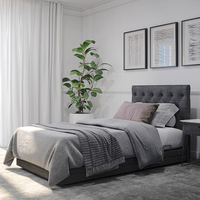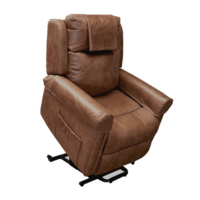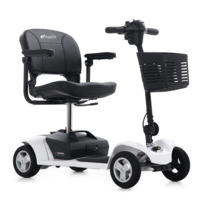4 Tips for A Successful Hip or Knee Replacement Recovery
Has your doctor recommended hip or knee replacement surgery?
While common procedures, there are still risks involved and it’s important to know what to expect before and after the surgery.
Like any surgery, an essential component of the success of a hip or knee replacement is the recovery period. When you think of hip and knee replacement surgery, chances are you imagine being immobile for days, if not weeks, while you recover.
However, doctors recommend walking as soon as your able after your surgery. Many people are up and walking in as few as eight hours after their procedure, and carrying out light activities within a few weeks.
Your orthopaedic surgeon will outline exactly what you need to do to ensure your recovery is as smooth as possible. The guide includes advice on preparing your home along with hip aids and knee aids that can aid recovery.
1. Prepare healthy meals and meal plan
Because your movement will be limited in the days and weeks following surgery, it’s essential that you maintain your health. If you gain weight, this places additional strain on the new joint and can make recovery slower.
In the lead up to your surgery, cook a few healthy meals in bulk to get you through when you won’t be able to stand or move. And make plans with friends, family or carers to ensure someone will be able to help you with cooking and grocery shopping while you recover.
2. Move as much as possible
Light movement is key to a successful recovery from a hip or knee replacement. It’s likely your medical team will have you up and walking within 24 hours after your surgery (with the help of pain medication) and most people will be discharged within three to five days following surgery.
Your surgeon and physiotherapist will outline the specific exercises and activities you need to carry out. Following your rehabilitation exercises as closely as possible will result in the best possible outcome.
Supporting frames and crutches are also vital at this time while you get your physical strength back.
Made from a lightweight frame on wheels, walkers provide the support you need to get around while removing some of the weight on your lower body. A flat tray also allows you to use the walker as a mobile meal trolley, allowing you to maintain independence while recovering from surgery.
3. Prepare your home for recovery
Being able to carry out your daily activities is as much about your mental health as it is your physical rehabilitation. The sooner you can take care of personal tasks on your own, like bathing, toileting, and dressing, the better you may feel.
Naturally, as your movement will be limited in the days and weeks following surgery, you may not be able to undertake all tasks unaided. A loved one or carer is vital for the early recovery days when you have limited movement and strength.
As time goes on, you’ll be able to carry out more tasks without assistance. You can prepare for this by making practical modifications to your home so the things you need will be accessible to you.
This may include moving furniture to ensure a clear pathway between rooms, removing tripping hazards like rugs and mats, and placing frequently used items on a bench or low shelf.
4. Hire or buy hip aids and knee aids
Simple hip and knee aids can also make a significant difference in the type of tasks you can carry out during your recovery. These can be hired or purchased before your surgery so you can get a feel for how to use them.
Bathing aids
Bathing is one of the riskiest activities you can undertake after surgery. The small space and wet areas can increase the chance of a slip or fall, which can prolong your rehabilitation period.
Bathing aids including shower seats and bath swivel seats allow you to wash in comfort while reducing the risk of a fall. They can be easily installed in almost any existing shower or bath.
Toilet aids
An over toilet aid makes it easier to get on and off the toilet. The sturdy frame provides extra support while your lower body regains strength. Adjustable height increments make it suitable for almost any user.
Dressing aids
In the weeks following recovery, you will be restricted from bending or leaning. This can make dressing difficult. Dressing aids provide assistance with simple tasks such as putting on and removing socks, pants and shoes.
Browse the full range of knee and hip aids available from MobilityHQ. Not sure what you need? Our friendly and knowledgeable team can help you find the right products to aid your recovery.



























